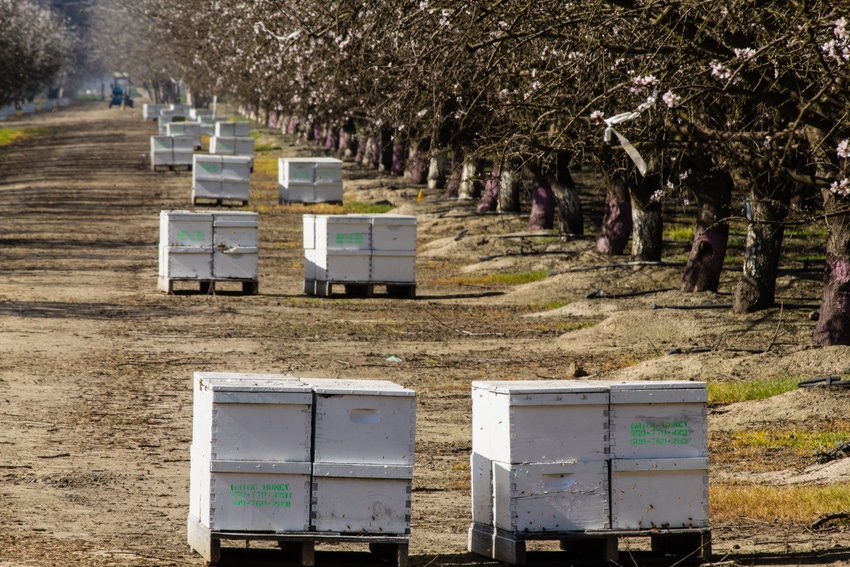
There is a drought in North Dakota. Why should almond growers in California be concerned?
According to Will Nissen, a beekeeper at Minot, N.D., there are 600,000 bee colonies in the state and nearly all are transported to California for almond pollination. He says parts of North Dakota and the Upper Plains area are suffering the worst drought since 2005.
“We don’t know what effect it will have on hive strength,” he said.
Stress from the lack of natural forage can be hard on bees and Nissen expects colony strength could be compromised. While he normally brings 12,000 colonies a year to California for pollination in California, he may have 10,000 colonies due to losses.
He’s feeding a lot of sugar to supplement the bees but the forage shortage is impacting hive strength.
Los Banos, Calif. beekeeper Gene Brandi says additional cotton acres planted in the San Joaquin Valley are helping feed bees remaining in California over the summer and fall months. While many colonies are typically transported to the Midwest at that time to take advantage of native forage, the drought in some areas has caused some beekeepers to ship bees early to California.
Brandi, also the president of the American Beekeeping Federation, said it is hard to say how the drought in North Dakota and neighboring states will affect hive strength and the number of hives available for pollination early next year.
“Beekeepers are feeding protein patties and sugar to supplement the bees, but those aren’t as good as natural forage they would normally eat,” Brandi said.
Dennis vanEngelsdorp, president of the Bee Informed Partnership, a collaborative nationwide effort to understand honeybee decline, said one indication of hive strength is honey production.
He said in a National Management Survey conducted by the partnership that regions reporting low honey production the previous year also reported higher colony losses over this last winter. Low honey production is not a cause, he stressed, but an indicator.
Mite pressure can also be heavier in smaller colonies. If bees don’t eat well it’s no surprise they don’t grow. When there should be 40,000 to 60,000 bees at the peak and they only get to 20,000 then mites cause more damage.
“Forage is the best nutrition,” vanEngelsdorp said. “We were in drought last year in Maryland and it hit our colonies hard.”
Tulare county beekeeper Roger Everett reports his hive strength has been up and down this summer. Some colonies were doing well with forage in melons and cotton while others are trying to build up.
To beat down mite pressure prior to honey extraction, Everett says oxalic acid is applied. When honey production is over in the late summer to early fall, more toxic materials are used to control Varroa mites.
Beekeepers have fought Varroa mites in honeybee colonies since the 1990s. Brandi began treating for the mite in 1992 and one treatment per season was sufficient for control. Over the last four years, he says monitored mite levels have led to 4-5 treatments per year for control.
While much of the green native forage in California has dried over the last several months, Brandi says some of the best forage is starting to bloom.
Absent from the valley and foothill areas for the last several years have been typical tarweed and bluecurl for forage. Brandi expects plentiful numbers this year. Plus, the native forage Toyon which he hasn’t seen in years is also blooming.
“There is something nice about having (a) mix of native forage to prepare the bees for the winter.” Brandi said.
The California almond industry uses about 85 percent of the available commercial honeybee colonies in the U.S. for pollination in the early spring.
About the Author(s)
You May Also Like




